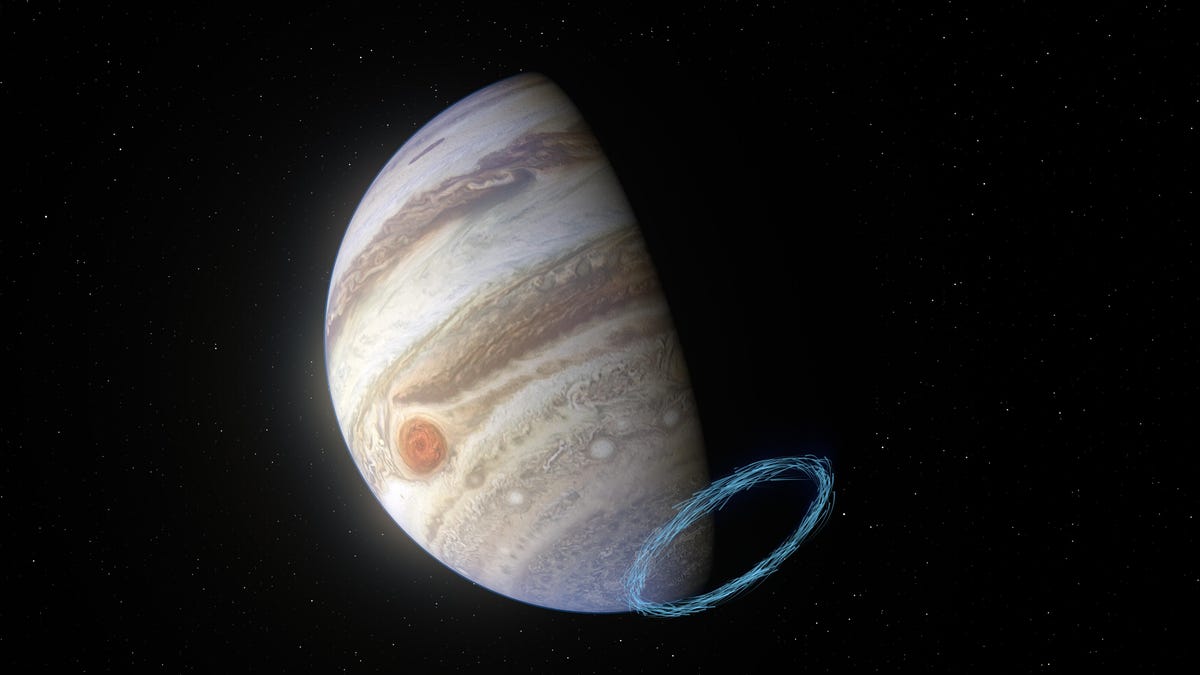Tornado-like 'beast' winds with speeds of 900 mph spotted on Jupiter
The gas giant planet was already known to be home to powerful storms. But they're even wilder than previously thought.

An artist's impression of winds in Jupiter's stratosphere near the planet's south pole, with the blue lines representing wind speeds. These lines are superimposed on a real image of Jupiter, taken by the JunoCam imager aboard NASA's Juno spacecraft.
Jupiter is known for the massive storm roiling in its iconic Great Red Spot, but scientists have now been able to measure winds near the gas giant's poles that make that storm look like a stiff breeze in comparison.
The winds are found in the planet's stratosphere just under the bright auroras that can be observed near the poles. Astronomers refer to them as "strong jets" with wind speeds of 900 miles per hour (1,450 kilometers per hour). That's twice as fast as the speeds seen in the Great Red Spot and three times the power of Earth's strongest tornadoes.
"These jets could behave like a giant vortex with a diameter of up to four times that of Earth, and some 900 kilometers (559 miles) in height," explains astronomer Bilal Benmahi of the Laboratoire d'Astrophysique de Bordeaux in France, in a statement.
Benmahi is co-author of a paper on the discovery published in the journal Astronomy and Astrophysics, along with a team led by astronomer Thibault Cavalié.
"A vortex of this size would be a unique meteorological beast in our Solar System," Cavalié adds.
The discovery of such a powerful force in the middle of the planet's atmosphere came as a surprise, as wind speeds at this altitude had been predicted to be much weaker.
Getting actual observations of the winds had proven difficult over the years due to the lack of clouds in this part of the atmosphere. Instead, scientists used Atacama Large Millimeter/submillimeter Array (ALMA) in Chile to track the speed of molecules introduced into the Jovian stratosphere by the impact of the comet Shoemaker-Levy in the 1990s. Specifically, they observed molecules of hydrogen cyanide and this allowed them to spot the powerful jets in the atmosphere.
The astronomers hope to see future missions to Jupiter, like Europe's planned JUICE mission, make more detailed follow-up observations.
This also sounds like the ultimate challenge for interplanetary kite makers to take up.
Follow CNET's 2021 Space Calendar to stay up to date with all the latest space news this year. You can even add it to your own Google Calendar.

